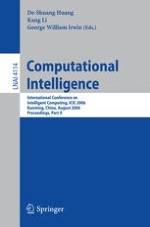The International Conference on Intelligent Computing (ICIC) was formed to provide an annual forum dedicated to the emerging and challenging topics in artificial intelligence, machine learning, bioinformatics, and computational biology, etc. It aims to bring together researchers and practitioners from both academia and industry to share ideas, problems and solutions related to the multifaceted aspects of intelligent computing. ICIC 2006 held in Kunming, Yunnan, China, August 16-19, 2006, was the second International Conference on Intelligent Computing, built upon the success of ICIC 2005 held in Hefei, China, 2005. This year, the conference concentrated mainly on the theories and methodologies as well as the emerging applications of intelligent computing. It intended to unify the contemporary intelligent computing techniques within an integral framework that highlights the trends in advanced computational intelligence and bridges theoretical research with applications. In particular, bio-inspired computing emerged as having a key role in pursuing for novel technology in recent years. The resulting techniques vitalize life science engineering and daily life applications. In light of this trend, the theme for this conference was “Emerging Intelligent Computing Technology and Applications”. Papers related to this theme were especially solicited, including theories, methodologies, and applications in science and technology.
